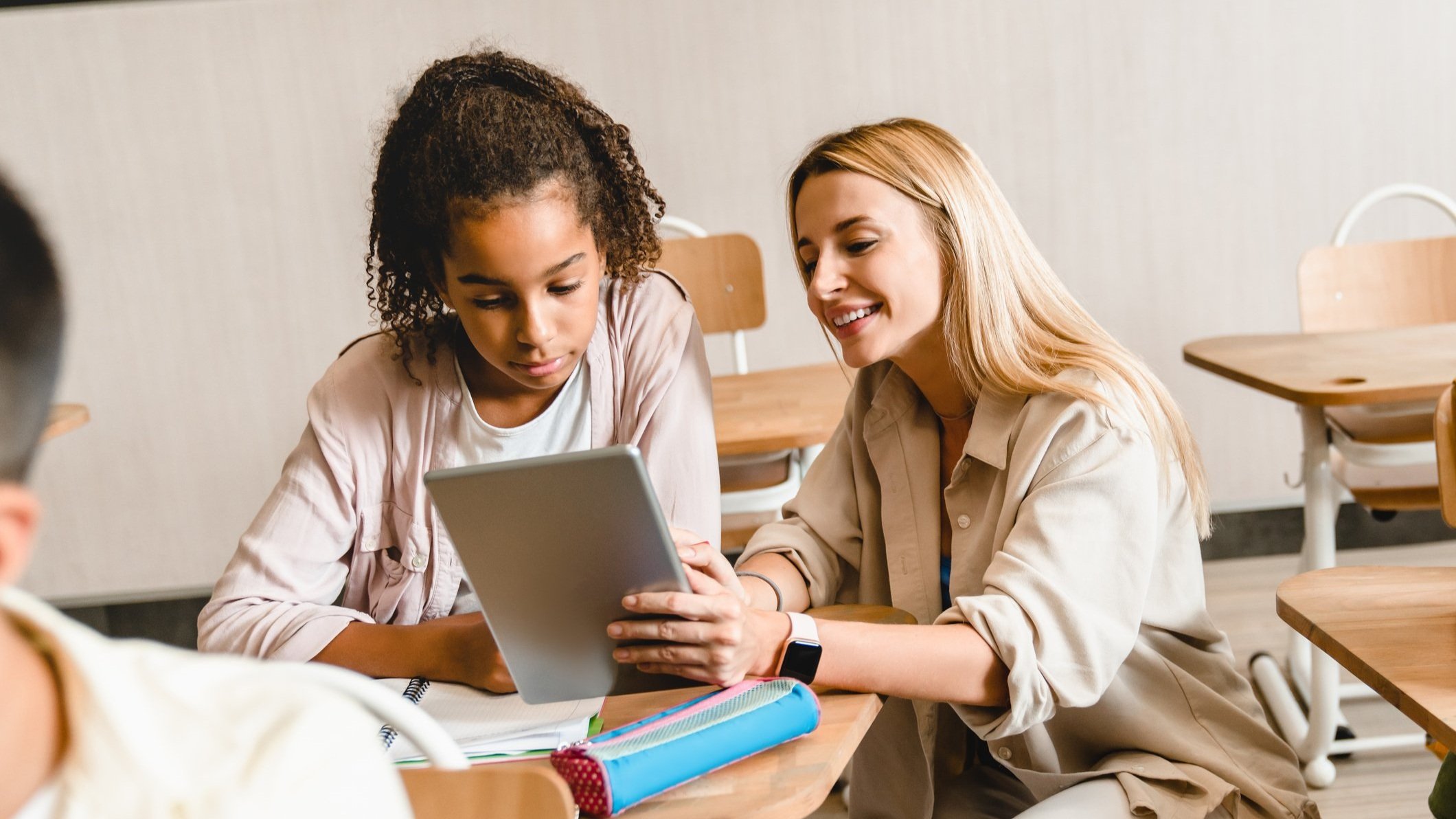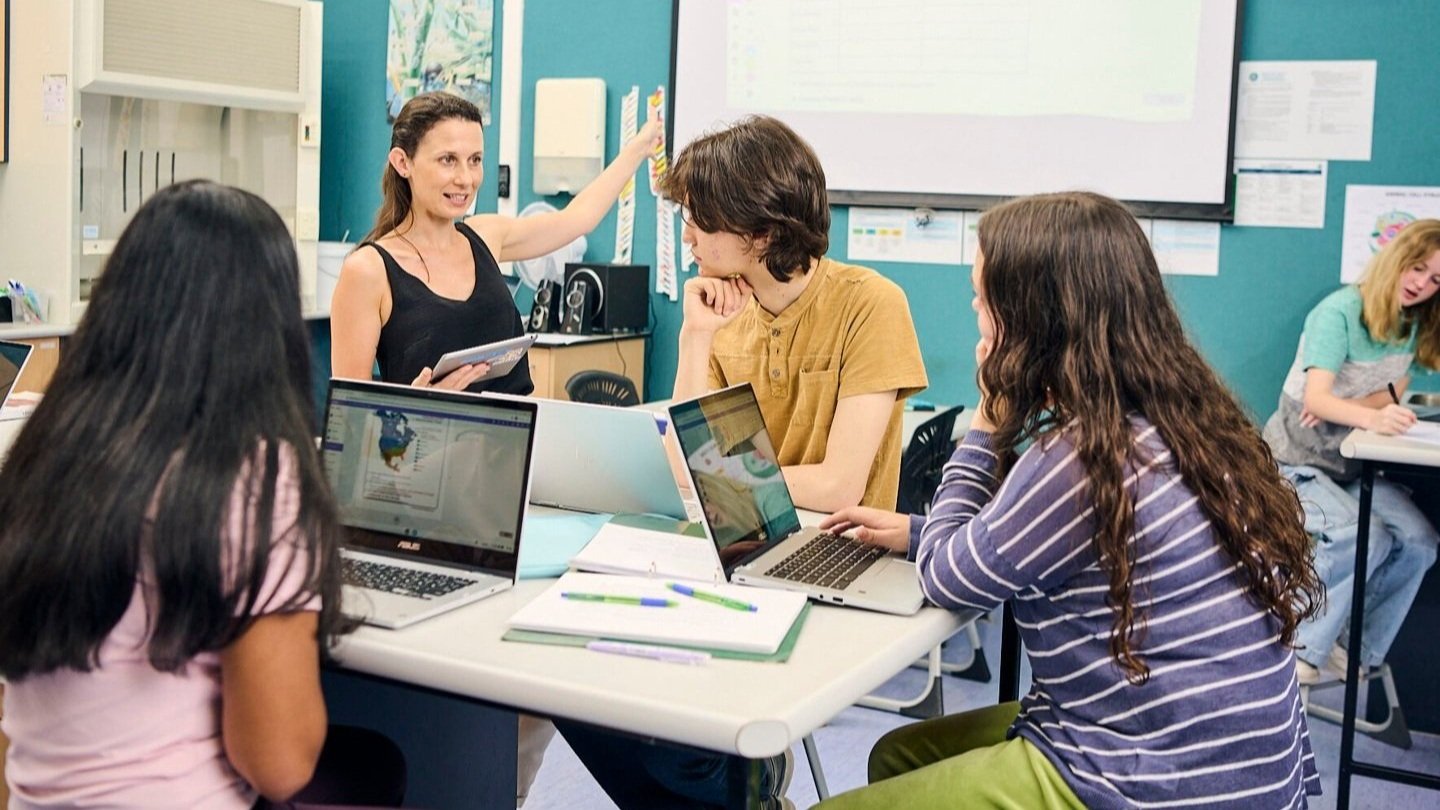Personalized Learning: A Comprehensive Guide
What is personalized learning?
Personalized learning is an approach to education that aims to meet each individual learner’s needs. Recognizing that different students learn differently, teachers who personalize learning are able to respond to the various interests, strengths, and areas of need that students bring to class every day. Although personalized learning can be difficult to put effectively into practice, especially given the traditional one-size-fits-all model of education, there are research-based strategies that any educator can use to better meet their learners’ needs today.
Of all the buzzwords in education today, one of the most common - and most confusing - is “personalized learning.” The growing presence of technology in classrooms, the rapidly evolving ed tech industry, and fears around learning loss after COVID have combined to make the idea of personalized learning more appealing - and perhaps more attainable - than ever before. This interest and excitement, however, raises one critical question. What exactly is personalized learning in the first place?
At the Modern Classrooms Project, we translate buzzwords into action. In this article, I’ll draw on my own experience as an educator - as well as extensive academic and action research to explain:
The Theory Behind Personalized Learning
A Brief History of Personalized Learning
Common Critiques of Personalized Learning
How Personalized Learning Works in a Modern Classroom
How You Can Personalize Learning to Meet Your Learners’ Needs
By the end of this article, you’ll be able to explain personalized learning confidently to anyone who asks - and also to apply research-backed insights to meet your own learners’ needs.
The Theory of Personalized Learning
Anyone who has ever tried to teach understands that every learner is unique. It’s efficient to group learners into classes based on their age, and it has social advantages too: it can be good for learners with diverse backgrounds and interests to work together to achieve common understanding of learning goals. However, with a class full of diverse learners, it’s essentially impossible for an educator to teach a single lesson that meets every learner’s needs. This is, fundamentally, the challenge of teaching.
The theory behind personalized learning is that the instruction that each student receives should be tailored to that student’s unique needs, interests, and abilities. Because each learner is a distinct individual, personalized learning promises an education that is designed to serve each learner individually. In a classroom that implements personalized learning, every student - regardless of background, ability, or preferences - should be able to truly learn.
This is easier said than done! And while the theory of personalized learning has been around for a long time, a look at its history shows why the standard one-size-fits-all approach to classroom instruction remains as entrenched as ever.
A Brief History of Personalized Learning
In many ways, the education that our great-great-grandparents received was more personalized than what we ourselves endured. Instruction in the traditional one-room schoolhouse was, in fact, often highly personalized to individual needs: because students of different ages shared the same classrooms, the teacher needed to be able to provide individualized instruction and support to each learner in the room. There was really no choice but to personalize learning!
With the industrial revolution, however, came our current factory model of schooling, in which age-based cohorts of learners proceed through an assembly line of content - often regardless of whether or not they understand - until the age of 18. This is the model that predominates to this day, and which requires classes full of diverse students to learn (or try to learn) the same material all at the same pace, even if some aren’t ready for it. This is the opposite of personalized learning.
We often think of personalized learning as a new trend in education, but it really isn’t. Over the past hundred-plus years, educational thinkers from Helen Parkhurst to Maria Montessori to Benjamin Bloom have advocated for more individualized approaches. And while they’ve had great successes within their own schools, the prevailing model of instruction remains largely unchanged.
Today, personalized learning is most closely associated with ed tech platforms, such as Khan Academy, which provide learners with unlimited access to content, which they can master at their own pace. In theory, these platforms give teachers the resources they need to create individual learning paths for every student. In practice, however, there are several challenges with this tech-driven approach.
Critiques of Personalized Learning
The most obvious critique of today’s technology-driven approach to personalized learning is that it makes learners overly dependent on learning from screens. Learning is a fundamentally human process, and putting young people in front of videos all day - even if they are videos aimed at each student’s needs - is unlikely to keep students highly engaged.
A related critique is that personalized learning treats learning as a fundamentally individual process, when in fact students can learn a great deal by working together. Social interaction is a powerful tool both for learning content and for developing social skills, and approaches that make learning solely an individual pursuit can deny learners the opportunity to grow in these ways.
Finally, personalized learning can require both mindset and practice shifts on behalf of a teacher. If a teacher isn’t properly trained in personalized instruction, or doesn’t understand the value of a personalized approach, both the teacher and their students are likely to suffer.
These critiques are all legitimate. Fortunately, there are several proven strategies educators can implement to make their classrooms more responsive to each learner’s individual needs.
Effective Personalized Learning
Personalized learning is likely to look slightly different in each classroom where it is implemented. In some classrooms, it may be an approach that unlocks learner curiosity and potential, while in other classrooms, it may result in students who are disengaged and bored. As with any pedagogical approach, personalized learning must be implemented in a way that empowers both educators and learners.
In general, the most effective personalized learning environments employ several key strategies:
Content Accessibility
Flexible Learning Paths
Immediate Feedback
Personalized Learning Strategy: Content Accessibility
It is difficult to personalize learning when instruction is delivered exclusively live and in person. Students often miss class, get distracted, or have trouble understanding content that is delivered at the teacher’s pace. These learners need a way to access this content outside of class, where they can learn at their own paces and catch up if they fall behind.
To personalize learning effectively, we have to make that learning accessible to our students, whenever and wherever they may be - and ensure that this learning retains a personal touch. One effective way to do this is for educators to record their own instructional videos, and/or to identify other instructional resources that they know their students will access asynchronously. This preserves the teacher’s role in delivering instructional content through blended instruction, while also freeing educators up in live classes to provide individual and small-group instruction during class.
2. Personalized Learning Strategy: Flexible Learning Paths
While many educators recognize that different students learn in different ways, most lack the time to create individualized learning plans for all of their students! This makes it difficult to create truly personalized learning experiences.
One way to personalize learning effectively, however, is to self-pace learning. In this approach, learners advance through content only when they achieve mastery - and have the time they need to reach it. This means that learners who are ready to move quickly can move ahead as quickly as they desire, while learners who need more time get the time they need. Rather than forcing students through the same content at the same pace, this personalizes learning by ensuring that every student is appropriately challenged and supported, every day.
This approach also makes it easier for educators to provide personalized support to learners. Educators can check in with individual learners who need more help, and provide targeted small-group instruction to learners who need it. This approach ensures that students who are struggling receive the support they need, without slowing down students who are ready to go farther or dig deeper into content.
3. Personalized Learning Strategy: Immediate Feedback
To truly personalize learning, educators must provide learners with accurate and timely feedback, to correct misconceptions and extend learners’ understanding. But in a classroom of 30 students (or more!), getting high-quality time to interact with every learner can feel impossible. This means that educators often give grades without the kind of personalized feedback that makes them meaningful - and helps learners truly grow.
Read about or listen to educators Jerod Brown and Dan Ronchak discuss the art of effective feedback in a Modern Classroom setting.
Mastery-based learning, however, reorients a classroom around feedback. Because educators have a clear sense of what students do and do not yet know, they can provide more effective feedback in an efficient way. Likewise, because learners will not advance until they achieve mastery, they will be motivated to seek out feedback, either from their teacher or from peers. When paired with blended, self-paced learning - which frees up the teacher to spend class time working closely with learners - a focus on timely feedback ensures authentic personalized learning for every student in the class. Instead of standing at the front of the class lecturing, or managing behavior challenges from disengaged students, educators using this approach can respond promptly and purposefully to meet every learner’s needs.
When both educators and learners focus on mastery, learning gaps stop forming, and each individual learner can feel truly prepared for their own next steps. Using quick mastery checks to assess student understanding efficiently, and fostering a culture of continuous revision and reassessment, can also support the learning process.
Next Steps for Personalized Learning
Interested in adopting personalized learning in your own classroom? You don’t need a particular ed tech platform, and you certainly don’t need to reinvent the wheel! In fact, meeting every learner’s needs through personalized learning can be as simple as adopting a few research-backed strategies. With guidance from our Free Online Course, you can:
Record simple instructional videos, using free tools. This doesn’t need to be fancy - just record your screen while you explain something! This will give you the ability to spend class time working in a personalized way with your learners, while they watch your video to learn.
Develop a system of tracking each learner’s progress. With a simple slide or spreadsheet, you can see at a glance who in your class has mastered what. That way, during one-on-one and small-group instructional time, you can tailor your instruction to learners’ individual needs.
Create “mastery checks” at the end of each lesson you teach. These are quick assessments (like Exit Tickets) to determine whether or not learners truly understand certain concepts or skills. If a learner does understand, let them advance; if not, give them additional support. That way, you’re personalizing instruction to meet their needs.
Personalized learning is compelling in theory - and these strategies make it actionable, too. I can’t wait to hear how you personalize learning for your own students!
If you are interested in partnering with the Modern Classrooms Project to transform learning in your school or district, we invite you to let us know!






